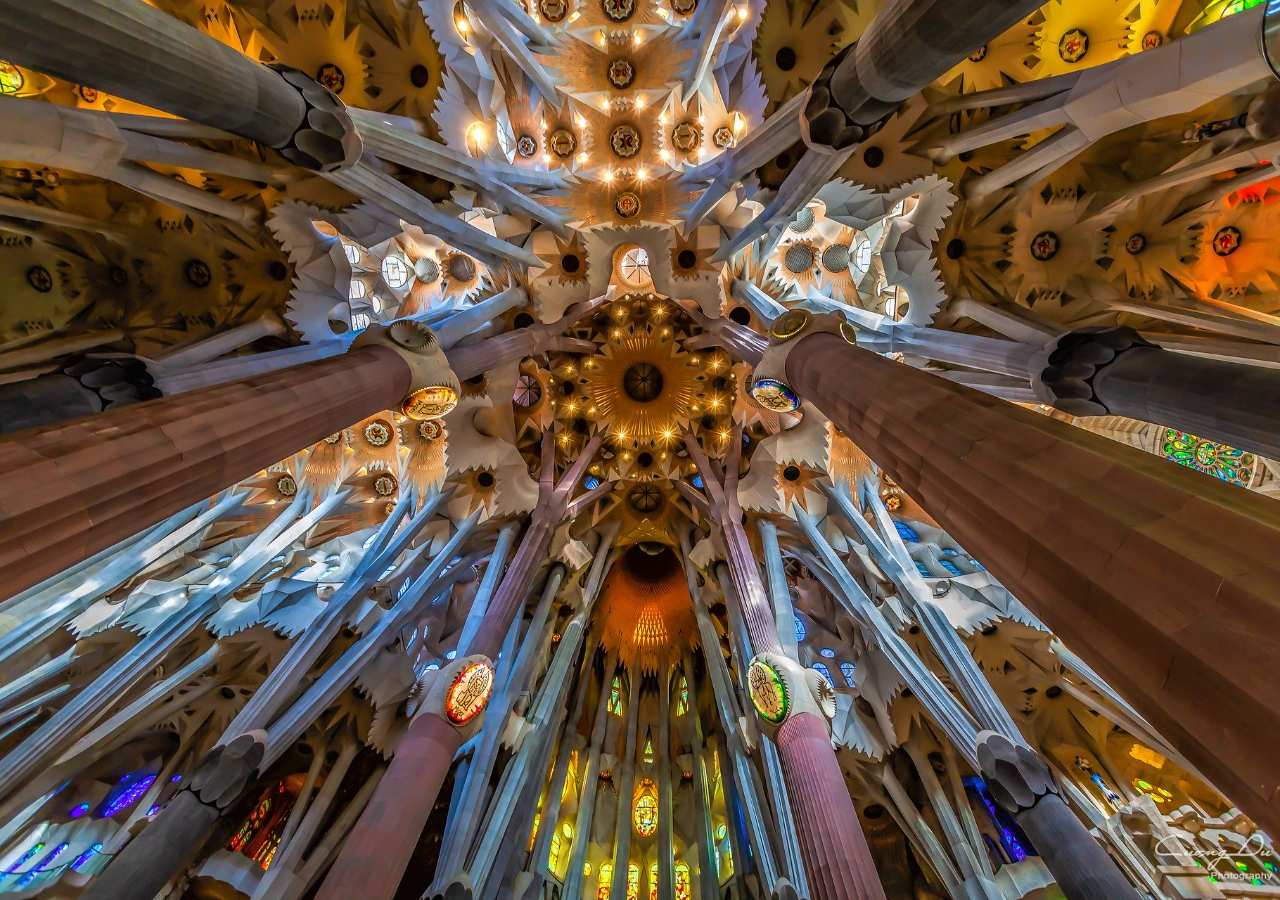Sagrada Família
The Sagrada Família, a Roman Catholic minor basilica located in Barcelona, Spain, is an architectural masterpiece designed by Antoni Gaudí.

The Sagrada Família, a Roman Catholic minor basilica located in Barcelona, Spain, is an architectural masterpiece designed by Antoni Gaudí. Initiated in 1882, the construction of this iconic structure remains incomplete even in the first quarter of the 21st century. Renowned for its distinctive organic form, the Sagrada Família stands out as one of Barcelona's most famous landmarks, with its bold flying buttresses and twisted towers dominating the city's skyline.
Originally envisioned by Francisco de Paula del Villar and funded through donations to promote Christianity in an increasingly secular Barcelona, the project saw Antoni Gaudí assume the role of chief architect in 1883. Gaudí's involvement spanned the entirety of his career, during which he transformed the original Neo-Gothic design into a structurally independent masterpiece. His vision incorporated a complex interplay of helicoidal piers, hyperboloid vaults, sidewalls, and a hyperbolic paraboloid roof, creating a symbolically rich representation of 20th-century cathedral architecture infused with visual symbolism expressing the mysteries of the Christian faith.
Gaudí, deeply devoted to Christianity, also played a significant role in the Renaixensa, an artistic and political revival aimed at revitalizing Catalan culture suppressed by the Castilian-dominated Spanish government. The Sagrada Família became a religious symbol of the Renaixensa in Barcelona, embodying the cultural and spiritual aspirations of the Catalan people.
Gaudí's designs and models, unfortunately mostly destroyed during the Spanish Civil War, envisioned a monumental structure capable of accommodating around 13,000 people. The basilica follows a basic plan, shaped in a Latin cross and surrounded by porticoes. Three facades – the Nativity, Passion, and Glory – narrate scenes from Jesus' life, with 18 towering spindle-shaped structures representing biblical figures, including the 12 Apostles, the four evangelists, the Virgin Mary, and Jesus.
Upon Gaudí's death in 1926, only a portion of the Sagrada Família was completed, including the Nativity facade, one bell tower, the apse, and the crypt. Domènec Sugranyes, Gaudí's disciple, took over the project. In 2010, the church was consecrated for religious worship and designated as a minor basilica by Pope Benedict XVI.
Despite interruptions, including the Spanish Civil War and the loss of Gaudí's original designs, construction persisted. Recent milestones include the completion of towers representing St. Mark and St. Luke in 2022, and the inauguration of the tower of the Virgin Mary in December 2021, expected to be the tallest point of the basilica at 138 meters. Work is ongoing, with the aim to complete the remaining towers and most of the church's structure by 2026, coinciding with the centennial of Gaudí's death, making the Sagrada Família the tallest church building in the world.
What people say about us
100% real opinions about our care and services